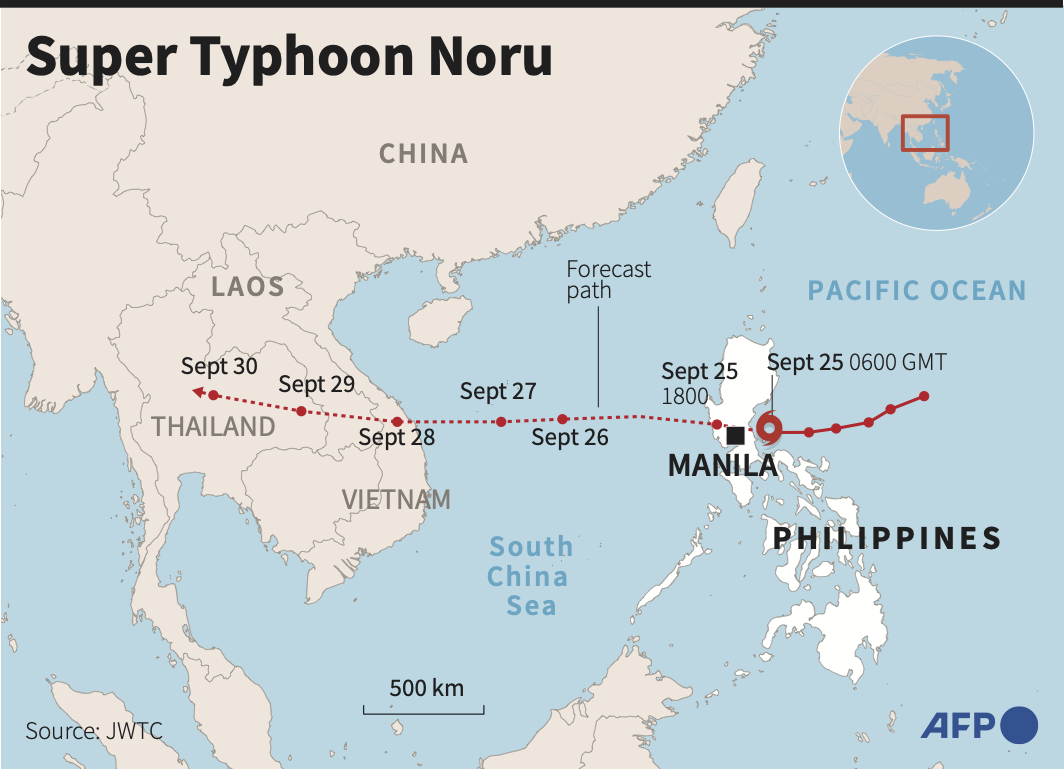MANILA: Filipinos across several northern provinces had no electricity and waded through waist-deep waters on Monday after Super Typhoon Noru brought heavy flooding across the region and left at least six dead.
The most powerful typhoon to hit the country this year passed through on Sunday night before heading out over the South China Sea towards Vietnam.
Nearly 79,000 people had been evacuated from their homes on the main island of Luzon on Sunday, as weather officials warned of winds that were an “extreme threat to life and property.”
President Ferdinand Marcos Jr. conducted an aerial survey of stricken areas on Monday, and stressed the importance of early preparations in preventing damage and loss of life.
“I think we may have gotten lucky at this time, a little bit,” Marcos said during a televised meeting with the National Disaster Risk Reduction and Management Council.

He added that it was “clear from what we did in these last two days” that preparations were “very, very important.”
He said: “Get people out of areas of danger, put all of your assets that you’re going to use for rescue and relief, put them in place as much as possible. It’s really in the preparations.”
Marcos ordered supplies to be airlifted and for equipment to be provided to help clean up areas hit by the typhoon.
Energy Secretary Raphael Lotilla told Marcos that repair crews were working in the provinces of Aurora and Nueva Ecija to restore electricity.
Areas of Nueva Ecija and the nearby province of Bulacan were still flooded as of Monday afternoon, according to aerial photos provided by the Philippine Army.
Bernardo Rafaelito Alejandro IV, an NDRRMC spokesman, said most of those evacuated should be able to return home within the next two days.
Five rescuers were killed as they used a boat to try to reach residents trapped by flood waters in Bulacan.
“They were heroes who were trying to save the lives of our countrymen amid this calamity,” said Daniel Fernando, the provincial governor.
At least one person died in a landslide in Quezon province, and at least five are reported missing in the province of Camarines Norte.
The Philippines is hit by about 20 storms and typhoons each year. The archipelago nation of more than 7,600 islands also lies in the so-called Pacific Ring of Fire, an arc of faults around the Pacific Ocean where the majority of the world’s volcanic eruptions and earthquakes occur, making it one of the most disaster-prone countries.
In 2013, Typhoon Haiyan, one of the most powerful tropical cyclones ever recorded, left more than 6,000 people dead or missing and displaced millions in the central Philippines.
















